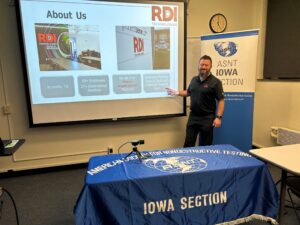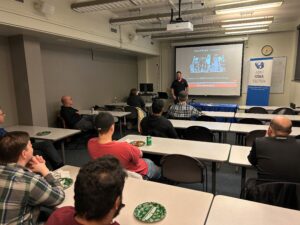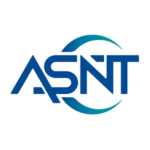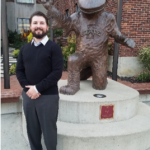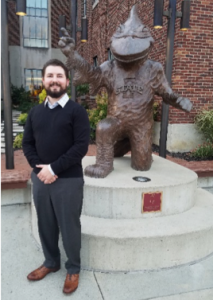Name: John C. Aldrin
How long have you been at CNDE or collaborating with? My earliest collaborations involved working with Bruce Thompson on model-assisted probability of detection (MAPOD) evaluation working group, going back to 2001. Bruce was a great leader, while also so gracious with his time and experience. I got to really appreciate how CNDE is such a special organization within the NDE research community. Over the years, I have collaborated with Steve Holland on vibrothermography research, and more recently in 2023, with the encouragement of Reza Zoughi, I became an Affiliated Research Scientist to help reinvigorate work at CNDE on MAPOD. I feel honored to be part of this organization and help to continue the legacy of Bruce and Don Thompson.
Area(s) of expertise: My core areas of expertise or nondestructive evaluation modeling and simulation, data analysis, algorithms / artificial intelligence (AI) for indication classification and material characterization, and reliability assessment.
Who or what inspired you to pursue your career in NDE? I have been interested in acoustics and vibration, going back to a co-op engineering position at Whirlpool Corporation in the early 1990s. When I decided to leave Whirlpool and pursue a Ph.D., I contacted Jan Achenbach at Northwestern back in 1997. I didn’t realize how important his work was at the time; I just knew he did ultrasonics research, basically “high frequency acoustics”. Thankfully, he had a great project that I really enjoyed, and I have had a series of wonderful opportunities since to continue work in NDE field.
Briefly describe one of your technical contributions to the NDE field. As part of my graduate work at Northwestern University, I led the development of automated defect analysis algorithms incorporating neural networks for interpreting data from complex weep hole ultrasonic inspections. These algorithms were the first application of machine learning in NDE to be fully validated with a comprehensive POD study, demonstrating enhanced performance relative to human data review. Since this effort, I have been involved with a number of transition program of algorithms/AI to support NDT data review.
What advice would you give a researcher just starting out in the NDE field? Be open to getting out of your comfort zone, whether it is working outside your favorite research topic, NDE technique or material system. Nondestructive evaluation is a widely varying field with research topics shifting frequently. I’ve worked on NDE for metallics, polymer matrix composites, ceramic matrix composites, and even concrete. You can gain a great deal of insight by stepping outside your comfort zone and expanding your perspective, which can lead to novel technical solutions.
